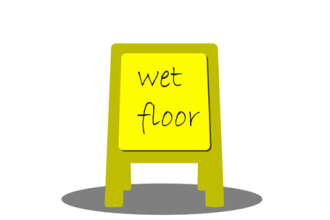Childhood is a time of innocence and vulnerability, a phase where every effort should be made to protect and nurture the young. However, instances of medical negligence resulting in catastrophic injury during childhood shatter this ideal, leaving families devastated and seeking justice.
Pursuing accountability for such tragedies is not only crucial for the affected families but also for ensuring accountability within the healthcare system.
In this article, we dive into the complexities of addressing child catastrophic injuries due to medical negligence. We will explore the challenges, avenues for recourse, and the importance of legal frameworks in securing justice.
Understanding Child Catastrophic Injuries
Child catastrophic injuries encompass a spectrum of severe physical harm that profoundly impacts a child’s life trajectory. These injuries often result from incidents such as birth trauma, surgical errors, misdiagnoses, or medication errors.
Conditions like traumatic brain injuries, spinal cord injuries, or severe burns can have lifelong consequences, affecting mobility, cognitive function, and overall well-being. Understanding the nature and extent of these injuries is crucial for both healthcare providers and legal professionals involved in seeking justice for affected families.
Identifying Medical Negligence
Identifying medical negligence in cases of child catastrophic injury involves a meticulous examination of the circumstances surrounding the injury and the healthcare provider’s actions. Forbes notes that factors such as failure to diagnose a medical condition promptly, improper treatment, or surgical errors may constitute instances of negligence.
It often involves reviewing medical records, consulting expert witnesses, and establishing a breach of the standard of care expected from healthcare professionals. Legal proceedings focus on determining whether the injury resulted from a deviation from accepted medical practices and whether it could have been prevented.
Emotional and Financial Toll on Families
Families dealing with a child’s catastrophic injury face significant emotional distress and financial burdens. The shock and grief of witnessing a child’s suffering, coupled with uncertainties about the future, take a heavy toll on parents and caregivers.
Additionally, the costs associated with medical treatments, therapies, and specialized care can quickly accumulate, straining family finances. Many families find themselves navigating complex healthcare systems while also trying to provide emotional support for their children, siblings, and themselves.
Seeking Redress Through Legal Channels
According to Justia, legal recourse offers families affected by child catastrophic injuries a path toward obtaining justice and financial compensation. Through civil lawsuits, families can hold negligent healthcare providers accountable for the harm inflicted on their children.
Compensation sought typically includes medical expenses, ongoing rehabilitation costs, lost earnings, and damages for pain and suffering. Legal experts specializing in medical malpractice guide families through the complexities of the legal process, advocating for their rights and interests.
Navigating the Legal Process
Navigating the legal process in child catastrophic injury cases demands thorough preparation and strategic maneuvering. Attorneys representing the affected families gather evidence, consult medical experts, and build a compelling case to establish liability.
Negotiations with insurance companies or healthcare institutions may occur to reach a settlement. Courtroom litigation becomes necessary if parties cannot agree on fair compensation. Throughout this process, legal teams provide support and guidance, ensuring that families’ voices are heard and their rights upheld.
Local Legal Frameworks and Challenges
Local legal frameworks vary in their approach to handling medical malpractice cases, presenting challenges for families seeking justice. Differences in statutes of limitations, caps on damages, and procedural requirements can significantly impact the outcome of a case.
The American Medical Association notes that California’s Medical Injury Compensation Reform Act (MICRA) limits non-economic damages in medical malpractice cases. This limits the compensation for pain and suffering to $350,000. This poses challenges for families seeking adequate compensation for the profound emotional and physical toll of catastrophic injuries.
Moreover, navigating the intricacies of California’s legal system requires specialized expertise, with catastrophic injury lawyers in California playing a crucial role. They specialize in representing individuals and families affected by severe injuries resulting from medical negligence.
According to Frantz Law Group, these legal professionals possess in-depth knowledge of California’s laws and regulations pertaining to medical malpractice. This enables them to navigate the complexities of the legal system on behalf of their clients.
Advocating for Systemic Change
Beyond individual cases, advocating for systemic changes within healthcare systems is essential to prevent future occurrences of medical negligence. Improved training and oversight for healthcare professionals, robust reporting mechanisms for adverse events, and greater transparency in healthcare practices can help mitigate risks.
By raising awareness, supporting legislative reforms, and promoting accountability, stakeholders can work collaboratively to create a safer environment for children receiving medical care. This helps reduce the incidence of catastrophic injuries.
FAQs
What is considered a catastrophic injury?
A catastrophic injury is a severe injury that results in long-term or permanent disability, significantly impacting the victim’s quality of life. Examples include traumatic brain injuries, spinal cord injuries, severe burns, loss of limbs, and permanent organ damage.
What is the difference between negligence and medical negligence?
Negligence refers to a failure to exercise reasonable care, resulting in harm or injury to another person. Medical negligence specifically pertains to cases where healthcare professionals fail to provide an appropriate standard of care, leading to patient harm or injury.
What is the MICRA law in California?
The MICRA (Medical Injury Compensation Reform Act) law in California was enacted in 1975 to address issues related to medical malpractice liability. It establishes limits on non-economic damages in medical malpractice cases, such as pain and suffering, at $350,000. Additionally, it includes provisions for periodic payment of future damages and restrictions on attorney fees.
In conclusion, the pursuit of justice for child catastrophic injuries due to medical negligence is essential for affected families. It is also critical for fostering accountability within healthcare systems. While legal avenues provide recourse, navigating complexities and limitations underscores the need for systemic reforms.
Advocating for transparency, improved training, and legislative changes can mitigate risks and promote a safer environment for children. By addressing both individual cases and systemic shortcomings, we can strive towards a future where every child receives the care and protection they deserve.















